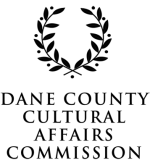
February 25-March 13, 2010 in the Evjue Theatre
Directed by Joan Brooks
Meg will run in repertory with Two Rooms.
Synopsis
 Jessica Jane Witham as Margaret More Roper (Meg). Photo Credit: Marie Schulte
Jessica Jane Witham as Margaret More Roper (Meg). Photo Credit: Marie Schulte
Based on the life of Margaret More Roper, the only daughter of Sir Thomas More in Tudor England. The political and ruthless hierarchies of Henry VIII and the Church are offstage forces that imprison Meg, a unique woman isolated from her time and environment through the gift and curse of her developed intellect.
Meg intertwines several themes and levels: It is the story of a famous man seen through his daughter’s eyes, it’s about a young wife and mother, and it’s also an exploration of the father-daughter relationship painfully becoming a man-woman one -- as Meg discovers “both diminish in size.”
Meg is not a history play. It is a play about history, and the ignored role, cast in stunning dramatic relief, that women have played in it throughout the centuries.
Learn more about the Trial of Sir Thomas More.
Performances
Thursday, February 25 at 7:30 pm
Friday, February 26 at 7:30 pm
Saturday, February 27 at 3:00 pm
 This project is supported by the Dane County Cultural Affairs Commission.
This project is supported by the Dane County Cultural Affairs Commission.
Friday, March 5 at 7:30 pm
Saturday, March 6 at 3:00 pm
Sunday, March 7 at 3:00 pm
Thursday, March 11 at 7:30 pm
Friday, March 12 at 7:30 pm
Saturday, March 13 at 3:00 pm
Saturday, March 13 at 7:30 pm
Press
Madison Theatre Guild presents this early play by Paula Vogel (“How I Learned to Drive,” “Baltimore Waltz”) in a smoothly directed production by Joan Brooks. Brooks' sure hand makes skillful use of the Evjue, arranged for this production as full theater-in-the-round.
Played by the radiant (literally and figuratively) Jessica Jane Witham, Margaret More Roper is a force of nature. Taught by her father to read Latin and Greek, ferociously intelligent and outspoken, Meg has been given a window into a world most women in the mid-16th century never saw.
- Lindsay Christians, 77 Square: Madison Theatre Guild's 'Meg' tells one woman's lost story
Cast
 l. to r. Mark Snowden as Thomas More, Jessica Jane Witham as Margaret More Roper (Meg), and Daniel Myers as Will Roper. Photo Credit: Marie Schulte.
l. to r. Mark Snowden as Thomas More, Jessica Jane Witham as Margaret More Roper (Meg), and Daniel Myers as Will Roper. Photo Credit: Marie Schulte.
- Margaret More Roper (Meg): Jessica Jane Witham
- Sir Thomas More: Mark Snowden
- Alice More: Judy Kimball
- Will Roper: Daniel Myers
- Thomas Cromwell: John Siewert
Music
Madison Theatre Guild is partnering with the Madison Early Music Festival (MEMF) in the creation of the soundtrack for our production of Meg. The theme for 2010 MEMF (July 10-17) is "England: Merry & Musical." Featuring an 8 concert series, a public lecture series, and a week of workshop classes, the Festival provides ample opportunities to learn more about music from the 12th century through the reigh of Queen Elizabeth.
Music for Meg has been provided by the following ensembles and artists who will be teaching and performing at the 2010 Madison Early Music Festival.
- Piffaro - "Waytes - English Music for a Renaissance Band"
- LIBER - "Flyleaves: Medieval Music in English Manuscripts"
- Parathenia with Julianne Baird - "Les Amours de Mai: Love Songs in the Age of Ronsard"
- The King's Noyse - "Seven Teares: Music of John Downland"
Learn more about the Madison Early Music Festival.
History
UW Continuing Studies is offering a course, "From Plantagenets to Tudors: history, institutions, and music (1154-1602), taught by Professor John W. Barker. Following the history of the two great English dynasties, their impact, and their legacies, the class is must for anyone wanting to learn more about the time in which Margaret More and her family lived. Sessions are Tuesdays from February 2-23. Learn more online or call UW Continuing Studies in Music at (608) 263-6670.
Historical Commentary provided by Professor John Barker
Paula A. Vogel's play Meg is an imaginative portrayal of the eldest daughter of Sir Thomas More, Margaret More Roper (1505-1544). She was remarkable for her day, as an accomplished scholar, commanding Latin and Greek; among her efforts was a translation of writings by Desiderius Erasmus, her father's friend. Since Meg was an unusual person in her time, Vogel attempts to visualize her, and her setting, through present-day perceptions, as if she were also a woman of our time. In that way, we have a multi-layered image of a past epoch.
Vogel draws seriously on factual knowledge, to which she makes regular reference. (She does, to be sure, seriously distort More's marital history.) For all her novelty of approach, however, she nevertheless honors traditional views of More himself, underplaying the man's great complexity and even inconsistencies. More was a man of deep late-medieval piety, and though he abandoned thoughts of taking monastic orders he wore a penitential hair shirt the rest of his life. On the other hand, as a follower of the Oxford pioneers Colet and Linacre, More blazed the trail of the new Renaissance Humanism of his day, cherishing learning and cultivating a breadth of vision. In his famous treatise Utopia (1615), More argued for religious toleration. Witty, learned, acute, as he was, and of incorruptible integrity, yet, in his capacities as judge and chancellor he dutifully committed heretics to torture by the lights of his time. Whether to execution as well remains debated. In sum, he was a man divided lifelong between staunch faith and ringing intellect, symbolic of his transitional era.
Following tradition, Vogel portrays Thomas Cromwell as the stereotypically ambitious, back-stabbing hatchet-man. By some recent thinking, however, Cromwell and Henry, for all their amoral treacheries, were the true progressives of their age, working to create a national, secular, and coherent civil order, the real builders of our "modern" world. Against them, More was a relic of an antiquated past. For all his veneer of English patriotism, More believed in a transcendent, supra-national order in both religion and intellect. As a devout Catholic, he understood the pope to be true leader of Christendom, superior (in religion) to monarchs. As a Humanist, he belonged to the international order of scholars, whose language was Latin, not the local patois. Both in religion and intellect, therefore, he was a martyr not so much to conscience and noble faith (however sincerely he believed it) but to transient values being superseded in a brutal age. His beatification and canonization as a saint were not judgements of his age, but of papal enactments respectively in 1886 and 1935, products of Catholic polity in our time.
Meg's devotion to her father was intellectual and emotional, not ideological. She and the rest of her family all subscribed by oath to the royal policies that More sternly rejected. Vogel has (mercifully) ignored one bizarre story about her. After his execution, More's head was displayed on a spike on Tower Bridge: it is said that Meg personally recovered the head, for burial in the Roper family vault. (The rest of the body is in the church of St. Peter ad Vincula in the Tower.)
Vogel's play gives much food for thought, and may prompt further study. See: Ernest Reynolds, Margaret Roper, Eldest Daughter of St. Thomas More (New York, 1960); Anne Manning, The Household of Sir Thomas More [1851] with Roper's Life of More (New York, 1911); Peter Ackroyd, The Life of Thomas More (London, 1998); Alistair Fox, Thomas More, History and Providence (New Haven, 1983); John Guy, Thomas More (London/Oxford, 2000); Richard Marius, Thomas More: A Biography (New York, 1984).
JOHN W. BARKER
